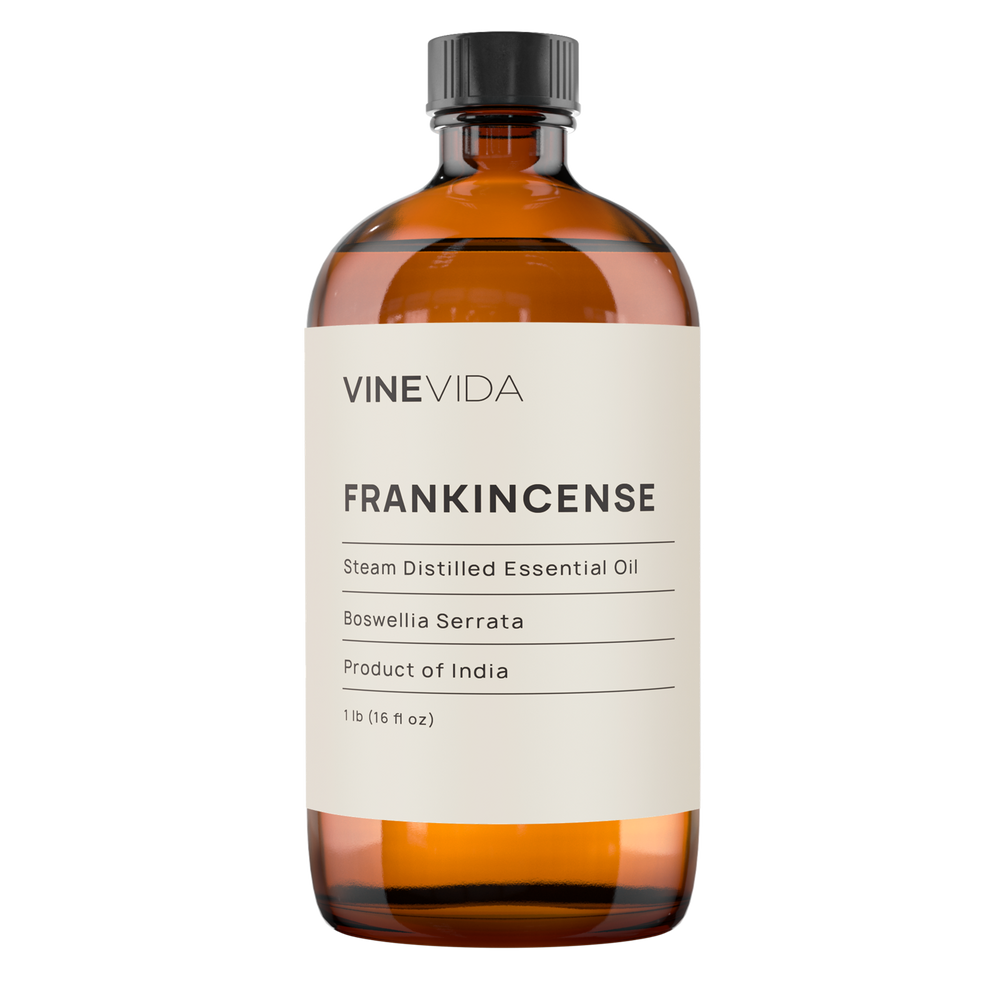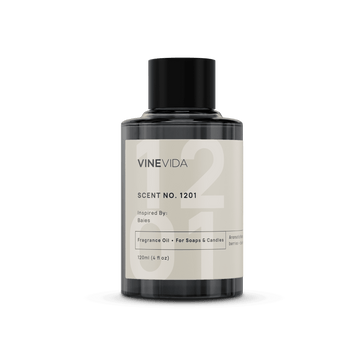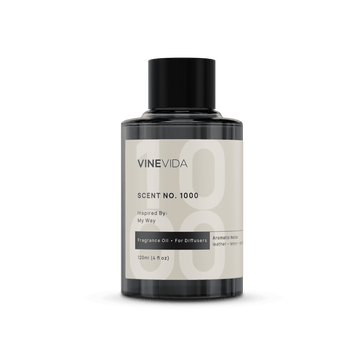What is Multiple Sclerosis?
Multiple sclerosis (MS) is a lifelong autoimmune condition where the body mistakenly attacks a critical layer of cells surrounding and protecting the brain and the spinal cord. This sheath of cells is made of an unusual set of cells called oligodendrocytes. Sclerosis can be translated to lesions - multiple sclerosis, lots of lesions - and these lesions damage the sheath, meaning that it can no longer transmit messages as well as it should, so signaling is slowed or disrupted.
Multiple sclerosis is associated with symptoms varying from person to person but includes problems with arm or leg movement, sensation, or balance, and vision. They can affect any part of the body.
The Main Symptoms Include:
- Muscle stiffness and spasms
- Difficulty walking and problems with balance, and coordination
- Numbness or tingling in different parts of the body
- Problems with thinking, learning, and planning
- Vision problems, such as blurred vision
- Problems controlling the bladder
- Fatigue
These symptoms may come and go in phases or worsen over time, depending on your MS form.
The variation in the severity of symptoms is vast. Some people only have very mild symptoms, but it can cause severe debility for some. While MS is rarely fatal in its own right, complications like chest or bladder infections or swallowing difficulties can arise in severe MS. Aggressive multiple sclerosis life expectancies are around 5 to 10 years lower than average life expectancy would be. The gap is constantly reducing as new therapies and technologies are introduced.
Types of Multiple Sclerosis
Generally, MS begins in 1 of ways: these can manifest as one-off attacks, known as individual relapses (or exacerbations), or with a gradual progression of specific symptoms like numbness or pain in the limbs.
Relapsing-Remitting Ms
The vast majority of people diagnosed with MS have the relapsing-remitting type. This group will have episodes of new or worsening symptoms, known as relapses, that typically worsen over a few days; these episodes can last for days to weeks to months. Then, these slowly improve over similar periods, and the person will be said to be in remission when their symptoms are absent.
Around 80-90% of people diagnosed with MS have this form.
For these people, relapses will often occur without warning, and while there can sometimes be no apparent triggers, they can sometimes be associated with stress or periods of illness.
The symptoms may disappear with or without treatment, but some can persist. Further, a person with MS may experience repeated attacks of the same (or different) symptoms recurring over several years.
Periods of remission - times when symptoms are absent - can last for years at a time.
After many years (usually decades), about two-thirds of people with relapsing-remitting MS will develop secondary progressive MS. Rather than presenting as episodic attacks, symptoms of progressive MS gradually worsen over time. However, some people with this form will continue to have occasional relapses during this stage.
Primary Progressive MS
Between 1 and 2 in every 10 people with the condition start their MS with gradually worsening symptoms. This is known as Primary Progressive MS. Here, symptoms slowly worsen and accumulate over several years. There are no periods of remission. However, people often have periods when their condition stabilizes a little.
MS is one of the most common causes of disability in younger adults and is most commonly diagnosed in people in their 20s, 30s, and 40s, although it can develop at any age.
A Strange Correlation
An estimated 2.5k people in the world have multiple sclerosis. According to the Society, around 1 million are in the United States.
The distribution of MS around the world is uneven. Generally, its prevalence increases the further north or south you journey away from the equator. Those parts of Asia, Africa, and America that lie close to the equator have deficient levels of MS, whereas Scotland and Canada have exceptionally high rates.
It is still unclear precisely what causes the body to attack itself in this way suddenly, but most experts believe it involves a combination of genetic and environmental factors.
It has been noted that certain ethnic groups have more resistance than others. The Sami or Lapps of northern Scandinavia and the Inuits in Canada have meager rates of MS, and similar patterns are observed amongst the Maoris of New Zealand.
Since multiple sclerosis is most prevalent in northern Europe, North America, Australia, and New Zealand, it has been suggested that it may have been carried around the world by European colonists and settlers and that the origins might be traceable to the Vikings and their colonization of parts of Northern Europe where MS is most pronounced.
Do 'Viking genes' make people particularly susceptible to MS?
It's a compelling theory.
Similarly, it has been suggested that the gene pool may have widened as Scottish immigrants moved around the world (Scotland has much higher rates of multiple sclerosis than England or Wales).
The Multiple Sclerosis Trust website has more about these exciting genetics theories.
Research suggests that the proportion of women with MS is increasing and is roughly 2 to 3 times more common in women than in men.
Essential Oils for Multiple Sclerosis
Essential oils can be beneficial for managing symptoms of multiple sclerosis. There are two layers to this. The surface layer is that certain oils will help with fatigue, pain, etc., and are tremendously good for managing stress.
But then, there is a deeper level, where researchers have observed how well certain oils improve symptoms and want to learn more about this, perhaps its functions, or to be able to verify precisely why this might be.
So, it's difficult to decide whether to list the oils I suggest and explain why they might be helpful or to go by symptoms. I will opt for the latter, but as such, you will find that oils like lavender (now one of the most well-researched essential oils for multiple sclerosis) keep popping up repeatedly.
However, I'd like to begin unconventionally by talking about the neurotransmitter GABA, its associations with symptoms, and how aromatherapy can help overall.
Understanding Essential Oils for Multiple Sclerosis Through Its Actions on GABA
Emotions, movement, and sensation are all governed by the nervous system.
Nerves transmit information from the limbs and organs back and forth through the brain.
All nerves send messages via the spinal cord, except for the olfactory nerves, whose messages go straight to the brain.
That last sentence was rich with information.
The spinal cord is one of the areas affected by lesions. This is where messages become dysregulated because of lesions in the myelin.
Olfactory nerves take messages about smells, which encompass essential oils, to the brain via a less affected pathway.
Anatomically, the nervous system is made of nerves sending electrical energy along them. The speed this energy moves along the nerves depends on the thickness of the surrounding myelin insulation.
Information is passed from nerve to nerve at the synapse.
Synapses are gaps between nerves.
Consider it like when the baton is passed between two runners in a relay race.
Electrical messages cannot traverse the synaptic gap (or synaptic cleft), so the chemical nervous system takes over here.
Chemicals called neurotransmitters feed information from nerve to nerve.
You may have heard of the ordinary neurotransmitters serotonin, dopamine, and GABA…but there are many more…around a hundred, that we know o,f in total.
This synaptic gap is like a soup full of wonders, and the richness of the ingredients affects the nature of how we feel from day to day.
For example, serotonin is involved in around 300 processes, from making sure our stools move through the body quickly to modulating our mood. Depression is associated with low levels of serotonin. However, it is unclear whether serotonin deficiency causes depression or depression causes the levels to drop.
Either way, balanced levels are associated with feeling well.
Central to well-being is the balance of GABA, the primary inhibitory neurotransmitter in the body. Instead of the word inhibitory, we could read calming.
Dysfunctional levels of GABA are associated with stress, insomnia, anxiety, fear, pain, and sleeplessness.
GABA is expressed by several different cells; significantly, in the case of this article, it is defined by immune cells and olfactory cells.
That immune cells are connected with GABA also means that GABA modulates inflammation. Therefore therapeutic strategies using GABAergic agents (agents that affect GABA) are being explored as the possible next phase in multiple sclerosis treatments.
In a recent rodent experiment, rats were chemically given encephalomyelitis to injure their brains; then, the researchers compared the differences between lots of GABA versus brains with deficient levels of it.
The studies showed that GABA gave significant neuroprotection because it modulated the immune response, preventing the brain from becoming inflamed. Less inflammation meant less pain and other related symptoms. (Stamula, 2022)
Olfactory neurons also express GABA.
In other words, when we smell calming things, our body makes calming neurotransmitters…
I mentioned lavender essential oil earlier, for example.
"Obvious…" you might say. And yes, it is, but bear in mind that all of those other aspects GABA influences- pain, memory, sleep -are all mediated through smelling calming things.
Incidentally, the nervous system also expresses other neurotransmitters and neurohormones via olfaction—Serotonin, dopamine, oxytocin, nitric oxide, and estrogen…all influenced by various essential oils.
So, next, I'd like to talk about the role of GABA in chronic pain conditions.
Why Inhaling Essential Oils for Multiple Sclerosis is So Powerful
Pain messages are transmitted to the brain through many mediums, and our perceptions of pain can, likewise, be affected by many things. For example, certain ethnicities experience pain more acutely than others, or being tired may make us feel like we are in more pain. Again, though, if we are distracted by something exciting, it's often the case that we don't even notice pain for a while.
In short, the brain is a trickster.
One of the main areas it can play tricks on is through the actual nerves in the body itself.
We've talked about this sheath of myelin that goes around nerves.
That's oversimplified.
Within each nerve are many bundles of fibers, and each one of those has its sheath. So rather than the image you might have that the nerve has myelin around the outside of it, there are many layers of it all butting up against each other right the way through the nerve.
Easier to see how messaging can become confusing now.
They can be divided into three groups based on their thicknesses.
How fast it transmits messages is dictated by how much myelin there is insulating it. So loads of myelin should mean fast messaging, and less myelin should mean the messages naturally reach the brain a bit later.
There is no reason to enter into the details of all the fibers here, only the ones with skinny myelin layers.
These are known as C Fibers,
Imagine if you have to burn your hand; these nerves keep reminding you afterward to be careful not to touch it again. (The others transmitted the immediate response to remove your hand from the heat and the Ouch, ow, ow…)
C fibers transmit a much longer, slower pulse that we experience as dull throbbing aches.
So the exciting thing about C-fibers is that they change shape. It has been recently discovered that they branch out and can act like a kissing gate based on the tone of the nervous system.
They can transmit to two different parts of the brain.
(Incidentally, this is very useful to know people who have fibromyalgia and explains why sometimes they might feel pressure like a feather-like touch, or when they have a flare-up up their pain levels can go off the charts.)
This transmission depends on how much GABA is in the system and also how many enkephalins are at the synapse. Enkephalins are like endorphins that exist within the spinal column and the brain. They are natural analgesics created when we exercise.
C Fibers open and close, branching out and changing direction based on how much GABA is in the system.
With healthy levels of GABA, pain should be manageable.
However, low levels of GABA mean that the C fibers that transmit low throbbing aches send information to a different part of the brain - a pain center- that always reads messages as pain, pain, pain.
As such, stress management is vital. Keeping calmer can be achieved by inhaling essential oils (and using them topically for massage, etc.), doing exercise and meditation, and other lifestyle therapies.
In these situations, sit and inhale the oil for 5 to 10 minutes daily. No great science is involved in that, simply contemplating music, reading a poem, or watching the telly—anything to keep the mind occupied and calm. I have several meditations on my YouTube channel that you could use if you wanted to.
The most calming essential oils for stress would be lavender, chamomile, geranium, rose, sandalwood, frankincense, vetiver, valerian, cedarwood patchouli, and palo santo.
One final point in this before we move on. Neurodegeneration is often first recognized in conditions like Parkinson's and Alzheimer's because the sense of smell weakens. This is because the cell turnover of olfactory neurons is so fast. So as the neurons deteriorate, they stop turning over so fast and begin to die off.
Until recently, it had been thought that this might not happen with MS because the sense of smell is rarely affected. However, recent data show that the same phenomenon occurs more slowly. As such, then, it's the adage…use it, or lose it…the more you use them, the more vital that particular rain part should remain.
Understanding the Essential Oils for Multiple Sclerosis
Lavender (Lavandula Angustifolia)
Lavender has high levels of linoleic acid and linalool, which have proven analgesic properties. They are also proven to have anxiolytic and antidepressant qualities helping to balance mood.
Importantly, research shows that inhaling lavender reduces explicit fear of falling over in people with MS and improves balance by acting upon the proprioception centers of the brain. (Seddighi Kavidak 2022)
It is proven to alleviate feelings of MS fatigue (Motaghi, 2022) and improve working memory for patients with MS (Rezaie, 2021)
All the oils in this list will help you sleep, but lavender will always be at the top of that list.
Just a few notes on sleep because sleep difficulties are more common in MS than in the general population. This has many dimensions. The high prevalence of fatigue during relapses means you can often be more prone to napping. This can interrupt sleep patterns and make sleeping harder for some people.
If you are taking corticosteroids to counter your symptoms of fatigue, these are stimulating and can make nighttime less restful. Other MS medications can also disturb sleep.
Naturally, on days when movement may be painful or you feel exhausted, it makes sense to rest, but the less activity we do, the harder it is for us to sleep at night.
Restless legs (use clary sage), pain, urinary or bowel symptoms, and hot flushes (Use a lavender hydrolat)… make sleep harder, as do stress, anxiety, and depression.
Worry is the greatest of all the thieves of rest.
Good quality sleep is vital to maintaining overall wellness anyway. Still, when you can't get it, it adds to fatigue, memory, and pain.. Lack of restful sleep can cause daytime drowsiness and worsen some MS symptoms.
Lavender is soothing and is lovely used in massage or bath oils in particular.
Consider using lavender essential oil in a blender in a rollerball to use small amounts of pain daily.
Safety: Not suitable for use topically during the first 16 weeks of pregnancy.
Chamomile (Anthemis Nobilis)
When you are choosing essential oils for Multiple Sclerosis, I would be inclined to opt for Roman chamomile over German chamomile.
Roman chamomile essential oil is proven to have an anti-inflammatory nature. It's calming to the spirit, which is tremendous for helping support during stressful times.
Safety: Not suitable for use topically during the first 16 weeks of pregnancy.
Geranium (Pelargonium Graveolens)
The geranium essential oil supports healthy circulation and is wonderful for hormonal support, both of which can offer extra challenges on top of the symptoms of Multiple Sclerosis.
It is soothing and makes you feel like the world's weight is drifting away when used in the bath.
Geranium is one of the most important oils for treating stress.
Safety: Not suitable for use topically during the first 16 weeks of pregnancy.
Frankincense (Boswellia Serrata)
Frankincense essential oil slows the breath and restores elasticity to the tissues. It has anti-inflammatory properties and is wonderful for stiffness and difficulties with mobility.
Frankincense is tranquilizing by nature. It is sensitive and soothing and feels exceptionally calming when you're frustrated.
It's not accidental that frankincense is associated with churches and prayer since it brings a sense that God is closer to you and that your prayers may be answered.
Safety: Not suitable for use topically during the first 16 weeks of pregnancy.
Patchouli (Pogostemon Cablin)
Patchouli is extremely good for meditation because it moves the energy from the brain into the body.
It eliminates all those frenetic thoughts coming and going and slows everything down.
Safety: Not suitable for use topically during the first 16 weeks of pregnancy.
Sandalwood (Santalum Austocaledonicum)
Again, very pacifying and slow, quiet and prayerlike.
Safety: Not suitable for use topically during the first 16 weeks of pregnancy.
Vetiver (Vetiveria Zizanoides)
The oil of tranquility. It feels like a heavy blanket is being laid over you.
Safety: Not suitable for use topically during the first 16 weeks of pregnancy.
Valerian
It smells like dirty older men's feet, so blend it with something else, but there is no better oil if you are struggling to sleep or anxious.
Safety: Not suitable for use topically during the first 16 weeks of pregnancy.
Dealing with Pain Symptoms and Muscle Stiffness
To clarify…in the section, by all means, inhale these oils, but topical use and putting these essential oils for multiple sclerosis in the bath will probably be better here.
Juniper (Juniperus Communis)
Super for removing toxins from the joints that occur from muscular overwork
Safety: Not suitable for use during pregnancy or if you have a kidney disorder.
Yarrow (Achillea Millefolium)
Also, its Latin name is Achillea millefolium. "Millefolium," "thousand leaves," referring to its feathery leaves. Achillea…named after the Greek Hero Achilles, who could only be harmed on his heel. His mother had fortified the rest of him after she dipped him in the River Styx.
Yarrow somehow speaks to particular vulnerabilities that won't go away.
This blue oil contains azulenes which are like a liquid anesthetic.
Safety: Not suitable for use topically during the first 16 weeks of pregnancy.
Frankincense (Boswellia Serrata)
For all the reasons listed above, it moves the focus from how relaxed and comforted it makes you feel to the physical aspect of elasticity. It's a beautiful oil for stiffness.
Safety: Not suitable for use topically during the first 16 weeks of pregnancy.
Fatigue
I'd think citruses here: lemon, orange, grapefruit, mandarin…all those happy, positive, upbeat vibes.
Safety: None of the citrus oils is suitable for use topically during the first 16 weeks of pregnancy. Do not use grapefruit essential oil if you have a platelet disorder or are on blood-thinning medications. Also, never use old oils. This group is rich in monoterpenes, small molecules that oxidize quickly and can lead to skin sensitization.
Sweet Basil (Ocimum Basilicum)
If you've got severe "Don't want to's" (I have them most days!) Sweet Basil will counter that by kicking your ass just as hard. She's all about "Quit thinking about it and just do it."
Memory
Rosemary (Rosmarinus Officinalis)
So rosemary is both specific for nerve pain and good for memory.
Rosemary essential oil is proven to be an antidepressant, anxiolytic (works against anxiety), and antinociceptive (works against pain signaling). (Abdelhalim, 2015)
So really, rosemary is probably one of the most effective essential oils for multiple sclerosis…but she is also invigorating and stimulating.
Thus, you must use rosemary (and peppermint) sparingly and only in the morning.
However, if you made yourself a blend of lavender, rosemary, and Basil to use each morning, you'd feel much brighter, more confident, and in command of the day.
Safety: Not suitable for use in the first 16 weeks of pregnancy. Neither would I recommend using this oil if you suffer from high blood pressure, epilepsy, or any psychosis-related condition.
Peppermint (Mentha Piperita)
Again, definitely a morning oil. Improves focus, concentration, and memory.
Very upbeat and in control.
Safety: Not suitable for use during the first 16 weeks of pregnancy or on children under 6.
Best Vitamins For Multiple Sclerosis
Sadly, no cure has been found for MS, although there have been dramatic improvements in treatment strategies over the last twenty years. Another area of particular interest is trying to influence the fats of the myelin sheath through vitamin therapies.
Vitamin D
Vitamin D plays a role in regulating how cells called oligodendrocytes mature in the myelin sheath. It could be that vitamin D3 may encourage the sheath to regenerate new cells. Vitamin D may reduce inflammation, preventing further damage to the sheath.
As one might imagine, depression is a cozy bedfellow of MS, especially when repasses happen, and research suggests that vitamin D may also influence symptoms of depression.
As stated, vitamin D is believed to support healthy sleep.
Biotin
This regulates how our body metabolizes and uses fats and makes them. Since myelin comprises mainly fat, researchers speculate there may be benefits to supplementing with Biotin. Biotin may activate the carboxylases that increase how much myelin is made and may also support its repair.
Additionally, Biotin may enhance the manufacture of adenosine triphosphate (ATP), which may prevent neurodegeneration.
It's hard to know if this option is viable since studies are inconclusive.
Some people feel Biotin helps them, and studies show that the optimal treatment plan would be to take Biotin for 12-15 months (https://pubmed.ncbi.nlm.nih.gov/34332461/). However, others suggest their symptoms have worsened while they are taking Biotin.
An important consideration, if you are considering taking this supplement, is that the presence of Biotin in the bloodstream skews blood results, particularly thyroid labs.
Its presence can lead to misdiagnosis of conditions and interrupted treatment plans (Ylli, 2021). It is vitally important to discuss taking the supplement with your physician if you are considering it, so its effects can be gauged and accounted for holistically.
Omega 3
Supplementation of Omega-3 fatty acids is associated with enhanced quality of life for people living with MS, although the mechanisms of why remain unclear.
This polyunsaturated fat contains two important anti-inflammatory compounds, eicosapentaenoic acid (EPA) and docosahexaenoic acid (DHA), also associated with improved brain function.
Additionally, Omega-3 is proven to raise "good" HDL cholesterol and lower triglycerides and harmful fats in the blood serum, which supports normal cardiac health.
Final Word
Like you, I look forward to the day a cure is found for MS. Until that time, I hope this research on the essential oils for multiple sclerosis proves helpful to you and helps to make your life easier, more restful, and enjoyable.























